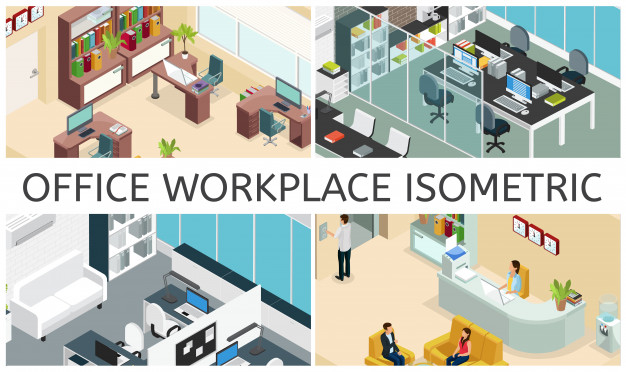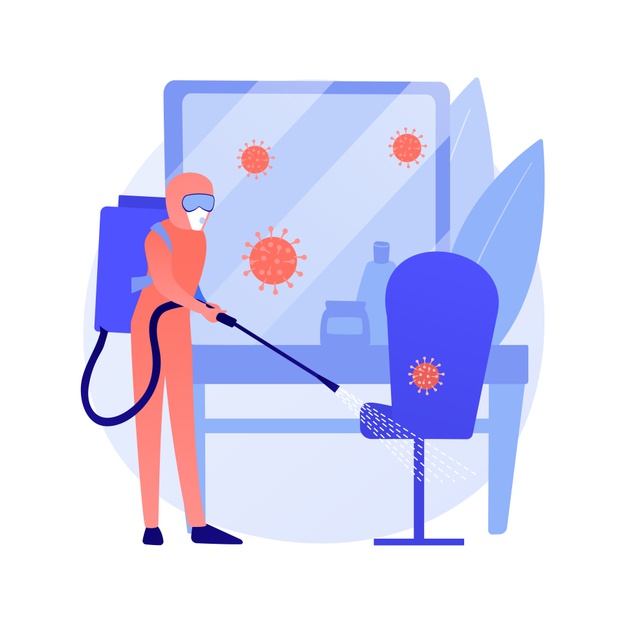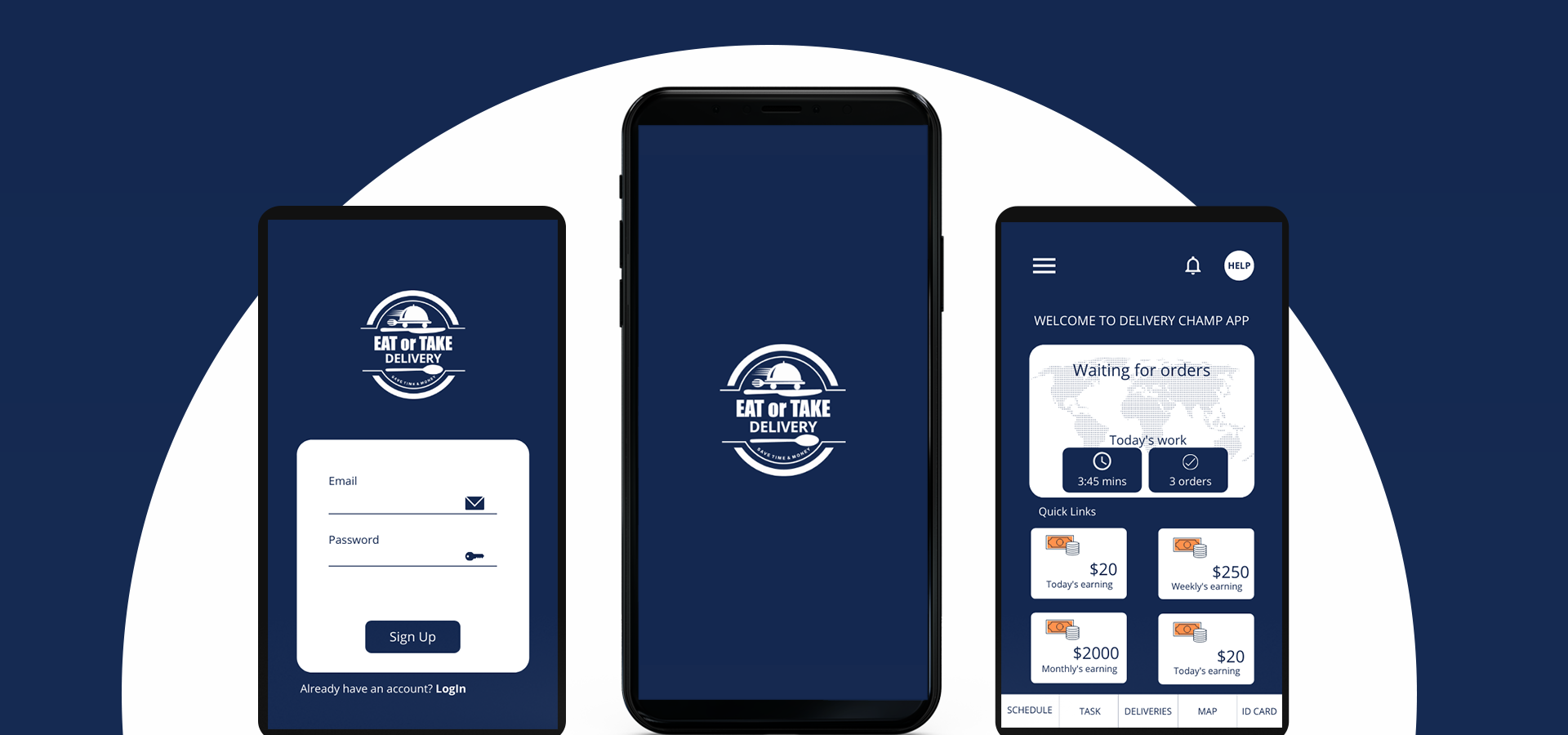Companies must develop new methods and safety procedures before returning to work as governments and towns continue to relax the limits on stay-at-home orders and social separation measures. According to the CDC, “current evidence suggests that new coronavirus may remain alive on surfaces for hours to days,” implying that cleanliness and hands-free technology will be critical in COVID-19 workplace reopening plans. OSHA is pushing firms to adopt coronavirus workplace safety guidelines, similar to previous influenza pandemic rules, to prevent the transmission of COVID-19 and decrease its impact on employees.
This coronavirus office safety checklist can assist businesses in adhering to the most recent recommendations and health rules when reopening their operations.
The following are some key lessons from the COVID-19 office safety guide:
The Workplace in the Post-COVID-19 Era: A New Normal
Is your place of business prepared for the new normal? There are extra safety steps that organizations can take to minimize the spread of the coronavirus in the workplace, in addition to existing office security requirements. To assess what significant improvements you may need to make in your facility to ensure the health of your employees, the CDC suggests using a COVID-19 office safety guide.
Because there are so many different individuals coming and leaving during the day, and most of them having to pass through common entrance points like lobbies, security checkpoints, and elevators, office buildings are ideal venues for diseases like this to spread.
As we return to work following the coronavirus, there are additional safety procedure steps your company can use to offer a safer work environment for your employees from the time they walk in the door
Coronavirus transmission at work is being reduced
The most effective strategy to prevent COVID-19 from spreading in the workplace is to keep germs out in the first place. To help your staff prevent the infection from spreading at work, follow these coronavirus workplace safety tips.
1. Educate your employees on the signs and symptoms of COVID-19, and devote additional HR resources to answering their questions on what to do if they get unwell or come into contact with someone who is.

2. To avoid spreading germs in the office, any employee who is sick should stay at home. To accommodate employees who test positive for coronavirus, consider introducing flexible sick time policies or extended sick leave
3. Employees who are at high risk of catching the virus should have as little physical contact as possible. If possible, encourage remote work or create a more isolated working atmosphere within the office. Employees might also be advised to wear face masks that cover their nose and mouth, as well as personal protective equipment (PPE), while at work
4. Handshakes should be avoided. The CDC highly cautions against handshakes during the coronavirus epidemic. It's nearly an involuntary reflex, especially when doing business.
5. Suspend or limit business travel and adhere to all CDC travel standards, including proper self-isolation and quarantine measures for any employee that travels
6. Ensure that tissues, hand sanitizer, soap, and disinfection wipes are readily available to all staff
7. While installing thermal cameras in offices and monitoring temperatures at the front entrance may appear to be a simple approach to screen employees, customers, and visitors for COVID-19-related fever symptoms, keep in mind that this technology is subject to additional privacy rules. If you decide to place thermal cameras in your business for temperature inspections, make sure you take extra precautions to secure personal data and identify information that may be captured through your thermal video surveillance systems. Extra sanitation between uses is critical with temperature scanning at entry points to avoid possible contamination, and it could significantly restrict the flow of traffic in and out of your business
8. If a coronavirus outbreak occurs in your office or building, contact tracing can help you track, report, and isolate patients. As you return to work, Bluetooth contact tracing technology can be a great asset in preventing transmission by making tracking and reporting incidents faster and more efficient. Make sure you're utilising a system with end-to-end encryption and anonymous identifiers to secure your data and privacy

In the workplace, there is a lot of social separation
Increasing the distance between people has shown to be crucial in keeping COVID-19 under control, and it is a continuing routine under US government recommendations for reopening the country. We can expect the layout of our workplace to evolve as social separation becomes the new normal. Larger areas, fewer workers, and the “six-foot office” are all beginning to appear in post-COVID-19 office designs around the world. With the following workplace social distancing regulations, you can use similar approaches in your office
1. Create flexible work environments that allow for telework and remote work. Reduce the number of personnel in the workplace, cut down on on-site meetings, and only invite visitors if absolutely essential. With our Smart Office Guide, you can ensure that your conference rooms and workstations are equipped with the best technologies for remote collaboration.
2. Work schedules should be staggered to reduce the number of employees in a given area at any given moment. You can use daily staggered shifts or have a portion of your teamwork remotely for one week and then return to the office the following week. Make careful to clean thoroughly in between shifts
3. Rearrange workstations to provide more space between employees. Desks should be at least six feet apart, and shared equipment or workstations should be avoided. Physical barriers such as plexiglass or plastic dividers, as well as floor decals, can be used to direct personnel or customers on where to walk to keep the recommended distance.

4. Lower the capacity thresholds in public locations. You can use space management technologies to identify the best course of action if you have access to real-time reporting. You can also use occupancy management systems to automate this process by counting the number of entrances and exits in real-time and disabling access until the number falls below a certain threshold
5. To reduce physical interaction, offer remote or digital services and switch to curbside pickup and delivery choices
Guide to restarting a COVID-19 workplace
Before returning to work, make sure you follow the CDC's and health authorities' COVID-19 reopening workplace guidelines. Before your employees return to work, the greatest method to reduce risk in your business is to minimise dangers to safety and security, such as lowering the number of common touch points around your building. Before reopening your office, consider upgrading to hands-free technology and making a few key modifications.
1. The coronavirus does not spread as quickly in outdoor locations or buildings with sufficient ventilation, according to studies. To minimise the viral load in office interiors, consider installing high-efficiency air filters and better HVAC or ventilation systems before returning to work
2. Determine where and how coronavirus could be spread at your place of business. Door handles, light switches, elevator buttons, lobbies, bathrooms, break rooms, and shared offices are all high-traffic areas and touch points to consider. Then establish a plan to reduce risk in those locations by cleaning and disinfecting them more thoroughly, both before reopening the office and as part of your new usual routine
3. Make the switch to a hands-free door entry control system. A Bluetooth-based system like Openpath avoids superfluous touch points in high-traffic access areas like lobbies, elevators, and entryways by providing motion -detection features for its readers. Even if you just have one or two entries, an all-in-one device like the Single Door Access Controller makes it simple to instal hands-free access control in any size location

4. Integrate your Openpath touchless entry system with automatic door openers, which allow employees to enter and exit without touching a door handle, to take your safety procedures even further
5. Antimicrobial hardware should be installed throughout your business. Silver ion coatings are now available on door handles, push/pull locks, emergency exit devices, and other items to assist prevent the transmission of bacteria and viruses.
6. Use a cloud-based solution for remote management 24 hours a day, 7 days a week, to accommodate work-from-home schedules while also enabling employees, deliveries, and maintenance access to the building when no one is present.
7. To prevent crowding in lobbies, entrances, and common areas, implement new social distance policies throughout your building. Instead of huge in-person meetings, schedule arrivals in staggered shifts, use video conferencing and virtual meeting tools, discourage social gatherings in common spaces, and remove shared appliances from break rooms and lunch rooms
8. Remove porous surfaces and fabrics from your workplace. Without sanitization, lobby chairs, carpets, and wall tapestries can store coronavirus particles for up to a week.
9. Maintaining the new COVID-19 return to work standards requires consistent communication and reinforcement of new processes. To ensure that everyone is prepared, post reminders throughout your facilities, send updated guidelines when new information becomes available, and give training and development resources to your team
Office safety and sanitation after COVID-19
As we return to work following the coronavirus, there are additional safety protocol measures your company can take to ensure that your employees remain safe at work. To maintain the health and safety of your entire workforce, you should execute these COVID-19 reopening maintenance practises in addition to routine cleaning with soap and water.
1.Cleaning and disinfection of all high-touch surfaces in your office, such as door knobs, desks, phones, light switches, and faucets, should be done at least once a day. PIN pads, shopping carts, and point-of-sale keypads are examples of surfaces that need to be carefully cleaned and disinfected before each use in public settings
2. Make sure you're using an EPA-approved coronavirus disinfectant and following the manufacturer's instructions for dilution and protection

3. Increase the frequency of deep cleanings in the workplace, with a concentration on high-touch areas including workstations, keyboards, phones, handrails, and doorknobs.
4. Increase the physical security measures you have in place. Traditional security measures might not be up to the task in a post-coronavirus office. You should be aware of who is arriving and exiting from your facility more than ever before, be able to track that data in real-time and react quickly in the event of an emergency. With remote work and staggered shifts set to become more common, be sure your security system allows you to control access to your site remotely and provide better security for your staff.
The most important lessons from the coronavirus office safety guide
The health and safety of your employees are the most crucial aspects of your business. While it may seem difficult to adapt your workplace regulations after COVID-19, it is critical to proceed with caution when returning to work. Establish COVID-19 workplace safety guidelines to prevent risk and decrease germ transmission between employees so that both your facilities and employees are ready for a post-coronavirus work environment.
Make sure you follow the sanitation and disinfection procedures before restarting your office following COVID-19.While personal cleanliness is important in preventing the virus from spreading, employers should also consider implementing hands-free door entry, rearranging offices to allow for social distance, and increasing disinfection and sanitization frequency in high-touch areas of the workplace.







